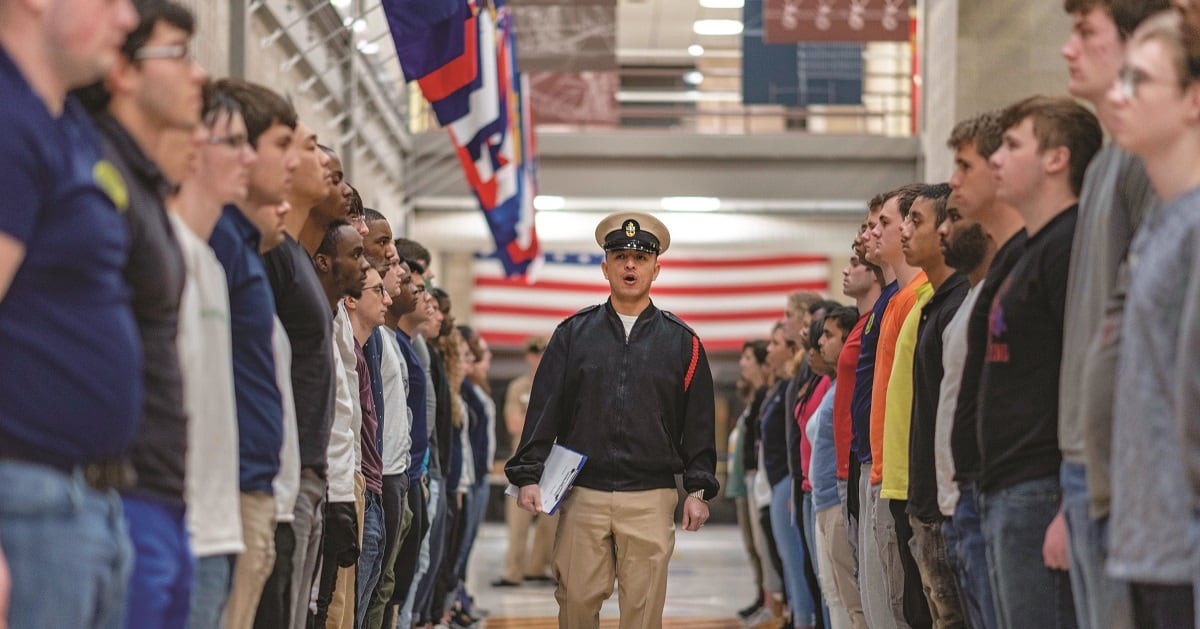As the military struggles to attract new recruits, the Navy on Monday began a pilot program that will let in those who have lower scores on part of the entrance exam used to gauge a recruit’s ability to serve.
Potential sailors are required to take the Armed Forces Qualification Test, or AFQT, to determine whether they are qualified to serve, as part of the Armed Services Vocational Aptitude Battery, better known as the ASVAB.
Under the Navy’s pilot program, the service will accept lower scores on the AFQT, between the 10th and 30th percentile, as long as the prospective sailor’s ASVAB individual line scores are still high enough to qualify for a Navy rating.
“The change means that prospective Sailors who have high enough ASVAB line scores to qualify for a Navy rating will not be held back by a low AFQT score, which can vary relative to how their peers did on the test,” Navy Recruiting Command spokesman Cmdr. David Benham said in an email.
An individual’s qualifications for various Navy ratings are based on 10 different ASVAB scores that help the service identify where a sailor would best fit within the fleet. Such job determinations are not based on their overall AFQT score, Benham said.
“To qualify for enlistment, the individual must still meet the minimum line score requirement for a given Navy rating,” Benham said. “These ASVAB line score requirements are unchanged by this policy, and they are not waiverable.”
RELATED

Those who fall within the lower AFQT percentiles must have already graduated high school, and the Navy plans to offer this exemption for up to 20 percent of its accessions, Benham said.
The pilot program will run through the rest of fiscal 2023 and be re-evaluated in October.
“As we continue to navigate a challenging recruiting environment, changing the AFQT requirement removes a potential barrier to enlistment, allowing us to widen the pool of potential recruits and creating opportunities for personnel who wish to serve,” Benham said.
The test score change announcement comes after the Navy raised its maximum enlistment age to 41 last month, up from 39.
The sea service barely made its active-duty enlisted recruiting goal for FY22, which ended Sept. 30, bringing in just 42 bodies more than the goal of 33,400 new members.
Navy recruiting leaders have warned that they expect FY23 to be difficult as well.
Geoff is the managing editor of Military Times, but he still loves writing stories. He covered Iraq and Afghanistan extensively and was a reporter at the Chicago Tribune. He welcomes any and all kinds of tips at geoffz@militarytimes.com.




